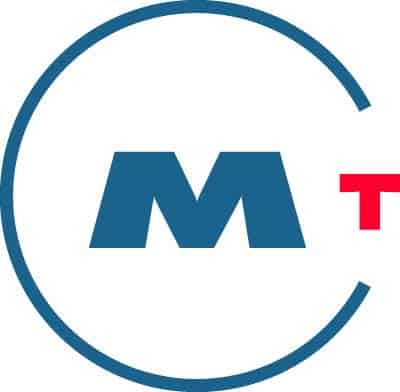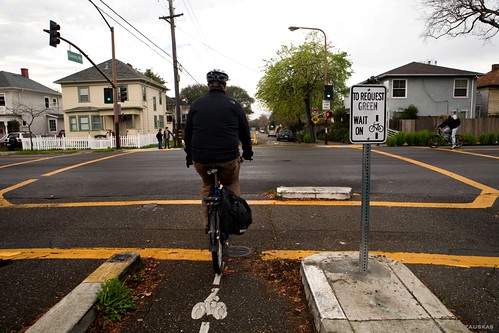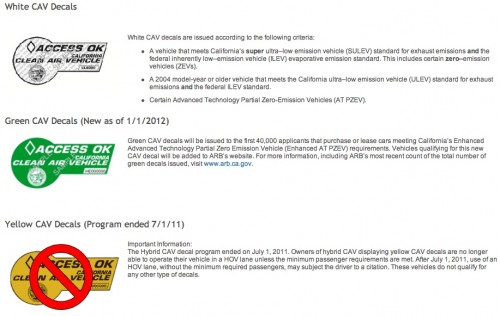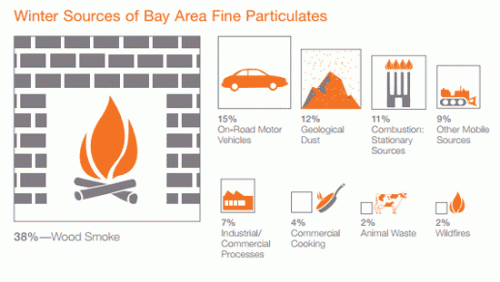
During the winter season, wood smoke is the largest source of harmful particulate pollution in the Bay Area. On a typical winter night, wood burning produces about one-third of the pollution in the air. From November 1 through the end of February, the Air District helps manage airborne pollution by calling Winter Spare the Air Alerts when the air quality is expected to be unhealthy.
Each day by early afternoon, the Air District will issue an air quality forecast for the next day. The alert will be in effect the entire next day, for a full 24 hours. When a Winter Spare the Air Alert is in effect, it is illegal to burn wood, manufactured fire logs, pellets, or any other solid fuels in your fireplace, woodstove or outdoor fire pit.
Residents can find information about the health effects of wood smoke, as well as detailed information about the Wood Burning Rule and how to comply with it on SpareTheAir.org’s website. You can also file a wood smoke complaint online.
Category: Air Quality
Bay Area Commuter Benefits Program Public Hearing (2014)
WHO: Bay Area Air Quality Management District (BAAQMD)
WHAT: Public hearing to consider the adoption of proposed Regulation 14: Mobile Source Emissions Reduction Measures, Rule 1: Bay Area Commuter Benefits Program. The proposed rule will serve as the foundation for the Bay Area Commuter Benefits Program (Program).
WHEN: Wednesday, March 19, 2014 at 9:45am
WHERE: 939 Ellis Street, San Francisco, CA 94109 at the 7th Floor Board Room
WHY: The objective is to reduce emissions of greenhouse gases (GHGs) and criteria air pollutants by expanding the number of employers who provide commuter benefits to their employees.
Background
California Government Code § 65081 (added by Senate Bill 1339) authorizes BAAQMD and the Metropolitan Transportation Commission (MTC) to jointly adopt and implement a Bay Area commuter benefits ordinance on a pilot basis through 2016.
How it will affect employers
The proposed rule will require employers with 50 or more full-time employees in the Bay Area to select one of the following four commuter benefit options to offer to their employees:
- Allow employees to exclude their transit or vanpool costs from taxable income, up to the maximum amount allowed by current federal law;
- Provide a transit or vanpool subsidy to reduce, or cover, employees’ monthly transit or vanpool costs;
- Provide a low-cost or free shuttle, vanpool, or bus service for employees (operated by or for the employer); or
- Propose an alternative commuter benefit that would be equally as effective as the other options in reducing single-occupant vehicle trips (and/or vehicle emissions).
Employers will also be required to:
- Register through a web-based registration process;
- Designate a contact person;
- Notify employees of the commuter benefit selected and maintain records to document the implementation; and
- Provide information needed for Program evaluation.
What will happen
Should the Air District Board of Directors adopt the proposed rule and if MTC concurs with this action, then Bay Area employers would have six (6) months to comply with the requirements of the program.
Comments
You may submit comments to the proposed rule and supporting documents to commuterbenefits@baaqmd.gov or to
David Burch
Principal Environmental Planner
Bay Area Air Quality Management District
939 Ellis Street
San Francisco, CA 94109
Written comments must be received by 5pm Friday, February 21, 2014.
Proposed Rule and Supporting Documents
See also Bay Area Commuter Benefits Program Public Workshop
See also New Bay Area Commuter Benefit Policy
Bay Area Climate Protection Strategy Workshop (2014)
The Bay Area Air Quality Management District invites you to a workshop on the Clean Air Plan and to initiate development of a Bay Area Climate Protection Strategy.
When: February 28, 2014, 9:30 am – 11:30 am
Where: Air District Office, 939 Ellis Street, San Francisco, 7th Floor
The purpose of the workshop is:
- To kick off the planning process for updating the Clean Air Plan
- To initiate the planning process to develop a Climate Protection Strategy for the Bay Area, which will be included as new element of the Clean Air Plan
- To report progress on implementing the control measures in the 2010 Clean Air Plan
- To solicit ideas and strategies to further reduce ozone precursors (nitrogen oxides, volatile organic compounds), particulate matter, toxic air contaminants, and greenhouse gases
- To seek input on innovative strategies to reduce greenhouse gases, mechanisms for tracking progress in reducing GHGs, and how the Air District may further support actions to reduce GHGs
- To describe future steps and the overall schedule in developing the Clean Air Plan update and Bay Area Climate Protection Strategy
Contact: Christy Riviere at 415-749-4925 or criviere@baaqmd.gov
See the flyer for more information or visit: http://www.baaqmd.gov/Divisions/Planning-and-Research/Plans/Clean-Air-Plan-Update.aspx
The workshop will be webcasted LIVE on the above listed at http://www.baaqmd.gov/Divisions/Planning-and-Research/Plans/Clean-Air-Plan-Update.aspx. Take transit! Civic Center BART station and MUNI lines 47, 49, 38 are nearby. Bike racks located onsite. More transit info at www.511.org.
Bay Area Bike-Share– Helping Us Get Around (2013)
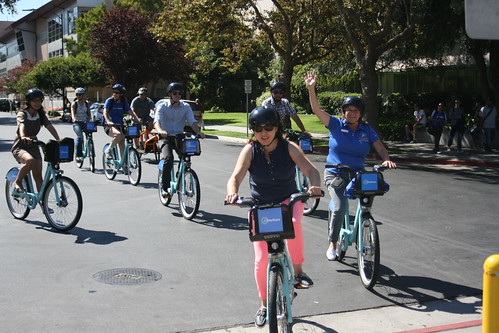
Will the streets of the Bay Area soon be full with a sea of bike-share commuters cycling that last mile from BART to the workplace? Only time will tell. Photo credit: Richard Masoner
The Bay Area is not new to transportation innovations. Last year, we celebrated four successful decades of the visionary commuter rail known as BART, which stills sees climbing ridership and continues be seen as a model of sustainable transportation for the rest of the nation. Coincidentally, last year also marked the 75th anniversary of another incredible Bay Area infrastructural transportation monument, the Golden Gate Bridge.
Today, the Bay Area is leading the way in California again*, albeit with a subtler and humbler infrastructural feature, but one that nonetheless has the potential to hugely impact the way we move– Bay Area Bike Share. Bay Area Bike Share just launched Thursday, August 29th, so the system is merely in its infancy, but similar systems have been around Europe for a while in cities such as Paris and London, and New York City was recently graced with its own iconic bike share earlier this year. Stateside, bike-share programs so far has proven to be surprisingly successful, especially in New York and D.C. Here in the Bay Area, bike share seems to have great potential to compliment our existing excellent regional public transport system, which is perhaps why Bay Area Bike Share is initially launching in Downtown San Francisco and along the Caltrain corridor in Redwood City, Palo Alto, Mountain View and San Jose.
Here’s how the system works:
- Get a Bay Area Bike Share Membership (or pay for a single day use, but longer membership quickly pay off).
- Use Annual Member key or enter your Ride Code (provided to 24-Hour and 3-Day Members) to unlock a bicycle from any station.
- RIDE – Run errands, ride to and/or from your BART station, commute to work, or just go for a spin and use it as a gym membership of sorts!
- Return the bike to the nearest station.
- Repeat steps 2 through 4. Remember, any trip under 30 minutes is free– and yes you can simply dock a bike and check out a new one for another 30 minutes of charge-free cycling.
Bike-share bikes are NOT intended for long trips and the pricing system reflects this. For example, using a Bay Area Bike Share bike for an hour and a half before returning it to a station, will cost you $12 in addition to your membership fee. Any trip under 30 minutes, however, is completely free after membership fee is paid.
So what are bike share bikes good for? Going to meetings or grabbing a bite to eat on your lunch break; cycling from a BART station to your office (at the moment, most downtown San Francisco BART stations have bike share stations nearby); replacing bus trips under three miles with a bike ride; avoiding having to bring your own bike on BART; the infamous last-mile… The possibilities are many, and as long as your journey takes less than 30 minutes (keep in mind, at a “no sweat” pace, one can easily cover at least three miles on a bicycle), using a Bay Area Bike Share bicycle is free. Because of this structuring, getting an annual membership is particularly enticing as it can save you money, especially if you use it to replace short bus trips and cab rides when getting around congested parts of San Francisco.
So what do you think– are you ready to take a Bay Area Bike Share bicycle for a spin?
For additional information, check out Bay Area Bike Share’s Frequently Asked Questions or Contact page. And if you are on social media, feel free to check out Bay Area Bike Share on Twitter, Facebook, Tumblr or Instagram.
*While Bay Area Bike Share is not the first bike share system to launch in California, it is by far the largest and is also distinguished in that it is regional and not confined to a single city, integrating the system well with our existing public transportation network and commuter routes.
Bay Area Commuter Benefits Program Public Workshop (2013)
What is the Bay Area Commuter Benefits Program?
California Senate Bill 1339, signed into law in fall 2012 created the Bay Area Commuter Benefits Program (Program). Employers with 50 or more full-time employees in the Bay Area are required to provide commuter benefit options to their employees.
- Employers can select one of the following four commuter benefit options to offer to their employees:
- The option for employees to pay for their transit or vanpool expenses with pre-tax dollars, as allowed by current federal law;
- A transit or vanpool subsidy to reduce, or cover, employees’ monthly transit or vanpool costs;
- A low-cost or free shuttle, vanpool, or bus service operated by or for the employer; or
- An alternative method that would be equally as effective as the other options in reducing single-occupant vehicle trips (and/or vehicle emissions).
Building on the success of similar programs adopted in the cities of San Francisco, Berkeley and Richmond, as well as the San Francisco International Airport, the Program facilitates a regional approach to encourage the use of sustainable commute modes, such as public transit, ridesharing, bicycling and walking, in the effort to reduce greenhouse gas emissions from the transportation sector, reducing traffic congestion and improving air quality.
In the Bay Area, where these programs are already in place, most employers have chosen the pre-tax option (option 1 above), which can provide economic benefits to both employers and employees through tax savings. Employers can reduce payroll taxes (approximately 9 percent of subject wages), and employees can lower their commute costs by up to 40 percent.
Plan Implementation
The Bay Area Air Quality Management District and the Metropolitan Transportation Commission are currently developing plans for adopting and implementing the Program, and will conduct public workshops to present, discuss and receive comments on the Program. View dates and locations of upcoming workshops.
See also New Bay Area Commuter Benefit Policy
Sparing the Air This Winter (2012)
November 1st signaled the beginning of “Winter Spare the Air“, which will run through until the end of February. What does this mean and how does it differ from Summer Spare the Air? As explained by Spare the Air website:

The Winter Spare the Air program notifies Bay Area residents when fine particulate, or soot, levels are anticipated to be unhealthy.
In the wintertime, particulate matter — especially particulate matter 2.5 microns or smaller in size (PM2.5) — can become a serious problem in the region. To protect public health, the Air District will issue a Winter Spare the Air Alert when PM2.5 concentrations are expected to be unhealthy.
From November 1 through the end of February, under the Air District’s wood-burning regulation, when a Winter Spare the Air Alert has been called, burning wood, firelogs, pellets, or any other solid fuels in your fireplace, woodstove, or other wood-burning device is illegal.
For further clarification of what this entails, be sure to visit the Winter Spare the Air Frequently Asked Questions page.
New Bay Area Commuter Benefit Policy
With S.B. 1339 passed, are you more likely to pedal as part of your commute?
Photo credit: Carrie Cizauskas
In September 2012, Governor Brown passed into law S.B. 1339 – legislation that allows the Bay Area Air Quality Management District (BAAQMD) and the Metropolitan Transportation Commission (MTC) to implement a region-wide Bay Area commuter policy benefiting employees who work at least 20 hours per week for an employer with 50 or more full-time employees in the nine-county San Francisco Bay Area. The purpose of the legislation is to encourage commuting by means other than single passenger automobile travel.
While some Bay Area cities already have commuter benefit policies to encourage the use of public transit or bicycling, the passage of S.B. 1339 will require select employers to offer one of the following commute benefits:
- The option to pay for transit, vanpooling or bicycling expenses with pre-tax dollars, as allowed by IRS Code 132(f) – the Transportation Fringe Benefit
- A transit or vanpool subsidy of at least $75 per month in 2013 and adjusted annually for inflation thereafter
- Access to a free shuttle or vanpool operated by or for the employer
- A customized alternative program by the employer that provides similar benefits in reducing single-occupant vehicles and is approved by MTC or BAAQMD
Read the S.B 1339 FAQs.
Keep your company connected to the latest S.B. 1339 information by signing up for our newsletter.
Low-Emission Id for High-Occupancy Lane Use
Do you drive a low-emission motor vehicle? Would you like to get a sticker so you can use a High Occupancy Vehicle (HOV) lane??
Vehicles meeting specified emissions standards may be issued CAV decals allowing the vehicle to utilize the HOV (carpool or diamond) lanes of California’s freeways while being driven by a single occupant. Image via: CA DMV
Check out the DMV’s Section 5205.5 and see if your car has what it takes to qualify for a sticker.
Great Race for Clean Air 2012
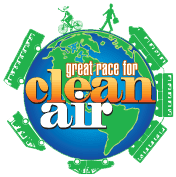 It’s back!
It’s back!
The Great Race for Clean Air is a friendly competition between Bay Area companies to encourage the use of commute alternatives such as transit, carpooling, vanpooling, walking and bicycling rather than driving alone to work to reduce greenhouse gases and smog levels in the Bay Area. Last year, 190 companies throughout the Bay Area saved 435 tons of CO2 by using commute alternatives.
Register your company to get started by August 31, 2012. Winning employers will be presented with trophies at a local Board of Supervisors meeting. Every participating employer will receive a certificate for participating. Take a look on how to sign up.
Your employees and co-workers can record their commutes online from September 1 to October 31, 2012. There will be weekly prize drawings for participants who record their commute. See how to log in your commute below.
Let the competition begin! Have fun and good luck!
Take a Deep Breath– Spare The Air Season Starts!
Tuesday, May 2nd, marked the beginning of Spare the Air season!
But what does this exactly mean?
Summertime is when smog becomes a major health problem here in the Bay and for the past 20 years the Bay Area Air Quality Management District, or BAAQMD, has managed the Spare the Air program to “educate people about air pollution and to encourage them to change their behavior to improve air quality.”

A layer of smog over Los Angeles. Photo credit: G&R
Between now and through October we are all urged to cut back on polluting activities like driving, using aerosol sprays or gas powered lawn mowers. On days where air quality is particularly bad, there will be “Spare the Air” smog alerts issued; those sensitive to unhealthy air are encouraged to limit outdoor time these days.
If you’re the kind of person who likes to breathe healthy air, you needn’t just cut back on activities that cause pollution, you can embrace environmentally friendly ones to help make this a cleaner summer and spare our air!
When it comes to transportation, 511 Contra Costa offers plenty of resources to help change habits for a cleaner air: walking and bicycling, public transit, or carpooling.
You can also download iSmog, an iPhone app that will send push notifications when the air quality in your area is unhealthy. The app allows you to customize when you would like to receive alerts and is free to download.
You can even plan a fantastic vacation while sparing the air thanks to offMetro SF!
If you want to stay informed about local air quality, or get involved to improve conditions, be sure to check out Spare the Air.
Join the Great Race for Clean Air!
 Are you looking for an opportunity to kickstart greener commuting at your workplace?
Are you looking for an opportunity to kickstart greener commuting at your workplace?
The Great Race for Clean Air is a friendly competition between Bay Area employers to determine who will reign as the company with the best Bay Area Commuters!
Register your company online to get started. Your employees and co-workers can log their commutes online from September 1 to October 31. Winners will be selected for greatest CO2 savings and for greatest participation rate.
Winners will be recognized at a local Board of Supervisors meeting, and all participants will receive a certificate!
What did last year’s winners have to say about the Great Race for Clean Air?
![]() “The Great Race organizers made it easy for the company to participate, and promoting it to employees was simple. We were delighted by the huge participation which led to Yahoo! receiving an award in 2010!”
“The Great Race organizers made it easy for the company to participate, and promoting it to employees was simple. We were delighted by the huge participation which led to Yahoo! receiving an award in 2010!”
![]() “The Great Race for Clean Air was a great way to promote our commute programs and we were pleased to have such a high percentage of participants.”
“The Great Race for Clean Air was a great way to promote our commute programs and we were pleased to have such a high percentage of participants.”
 “The Great Race for Clean Air was the perfect opportunity to help our employees become familiar with the transportation services available in a fun, competitive way. We are very proud to be one of the 2010 winners.”
“The Great Race for Clean Air was the perfect opportunity to help our employees become familiar with the transportation services available in a fun, competitive way. We are very proud to be one of the 2010 winners.”
The Great Race for Clean Air – it’s fun, and it helps Spare the Air! Register today!
Spare the Air turns 20!
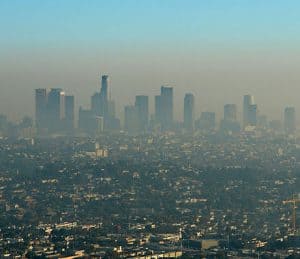 Thanks to two decades of the Bay Area Spare the Air Program, we can all breathe a little bit better this summer.
Thanks to two decades of the Bay Area Spare the Air Program, we can all breathe a little bit better this summer.
The Spare the Air Program, organized by the Bay Area Air Quality Management District (BAAQMD, “BACH-mid”), works in two ways:
- resources to help us protect our air, and
- tools to predict air quality near your home
The goal: to encourage people to leave their car at home at least one day a week.
511 Contra Costa helps you spare the air 365 days a year.
Whether it’s carpooling, transit, biking, or walking, we have tips and tools to take you from commuter padawan to traveling Jedi in no time.
511 Contra Costa also has a few air quality tools of our own.
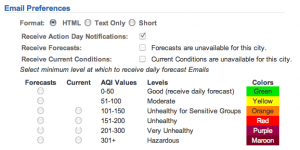 The Air Quality page keeps you up to date on air quality forecasts for your area.
The Air Quality page keeps you up to date on air quality forecasts for your area.
You can sign up to receive email, text or phone notifications if the air quality in your area is expected to pass the threshold of your choice.
And of course, with the iSmog app (for iPhone), you can browse current air quality as well as forecasts.

How are you preparing for the smoggy summer?
Thursday, January 6, 2011 is a Winter Spare the Air Day

Tomorrow, Thursday, January 6, 2011 has been declared a Winter Spare the Air Day for the Bay Area by the Bay Area Air Quality Management District.
To reduce your contribution to air pollution, please consider taking transit, telecommuting.
Wood burning is a major cause of wintertime particulate matter (PM) pollution in the Bay Area. The presence of fine particulate matter in the air is associated with:
- Decreased lung function
- Aggravated asthma
- Nose and throat irritation
- Chronic bronchitis
- Lung damage
- Irregular heart beat
- Premature death in people with lung and heart disease
Continue reading “Thursday, January 6, 2011 is a Winter Spare the Air Day”
Spare the Air Day called for December 1, 2010

Tomorrow has been declared a Winter Spare the Air Day for the Bay Area by the Bay Area Air Quality Management District. Wood burning is not allowed; second time violators could receive fines of $400.
Please consider reducing your contribution to air pollution by taking transit, ridesharing, and telecommuting.
From baaqmd.gov, here are 10 things you can do to reduce wood smoke pollution:
- Give your fireplace or wood stove the night off.
- Replace your fireplace or wood stove with a clean burning natural gas device.
- Insulate your house to keep warmth in.
- Save energy and reduce pollution by wearing a sweater on chilly nights.
- Switch to an EPA-certified wood burning device or pellet stove, which emit up to 70% less PM.
- Burn clean, hotter fires with plenty of air, in order to prevent visible smoke from a chimney or flue; smoke which indicates poor combustion so adjust dampers or fuel accordingly.
- Never burn, painted wood, treated wood, particle board, plastics, wrapping paper or other garbage; burning them releases toxic chemicals.
- Burn only dry hardwood fuel such as oak or cherry, which produces less smoke and burns hotter; never burn wet wood.
- Store wood in a dry or covered area, off the ground to keep it from getting wet.
- Keep your fireplace and stove well maintained to improve air flow and reduce emissions.
For more information, visit sparetheair.org.
Spare the Air Commuter Chronicles Contest – Win a $579 bike or Clipper card loaded with $100

The Bay Area Air Quality Management District is searching for Bay Area residents to share their commuting stories in its Commuter Chronicles video contest. Tell them why and how you Spare the Air during your commute — whether you carpool, take public transit, telecommute, bike or walk to work or get even more creative. Help inform fellow commuters and you just might win:
- * A Dahon Mu Uno Folding Bike ($579 value) *
- * $250 FasTrak pass and $100 Starbucks gift card *
- * One of 10 Clipper passes loaded with $100 *
For your chance to win, record a 60-second or less video showcasing how you help “Spare the Air” and submit it to the Spare the Air YouTube channel.
Continue reading “Spare the Air Commuter Chronicles Contest – Win a $579 bike or Clipper card loaded with $100”
Spare the Air Smog season begins for Bay Area (2010)

On Monday, May 3, 2010, Spare the Air announced the beginning of Smog season for the Bay Area. During the summer months, the Bay Area Air Quality Management District will issue Spare the Air Smog Alerts when the air quality forecast is considered to be unhealthy.
For more information about air pollution in the Bay Area, visit the Spare the Air website at www.sparetheair.org. You can also get air quality information and Spare the Air alerts delivered to your mobile device by downloading our free iPhone application, iSmog.
2010 Clean Air Plan for the Bay Area released by BAAQMD

Think the Bay Area’s got good air? Think again. The nine Bay Area counties* currently fail to meet state and federal public health standards for smog, soot, and fine particles. These types of air pollution can irritate the eyes and throat, trigger asthma attacks, and increase the risk of strokes and heart attacks.
State law requires districts that fail to meet smog standards to create smog-cleanup plans. As a result, the Bay Area Air Quality Management District (BAAQMD) created a 520-page plan with 57 possible measures to clean the Bay Area’s air, targeting everyone from dairy farmers and wineries to oil refineries and homebuilders.
Continue reading “2010 Clean Air Plan for the Bay Area released by BAAQMD”
Spare the Air Alert Ends for the 2009-2010 Winter Season

On February 28, 2010 the Winter Spare the Air season ended. Winter Spare the Air alerts will resume beginning November 1, 2010. After this day, it will be illegal to burn wood during Winter Spare the Air alerts.
However, residents who do burn in a fireplace our outdoor fire pit must still burn cleanly using dry seasoned firewood and not burn garbage, leaves or other material that would cause excessive smoke. Residents who exceed the excessive visible smoke provision in the wood burning rule could still be subject to an air district ticket or fine. For more information about the Wood-Burning Rule, visit Spare the Air’s official website.
Related: Read more about iSmog for iPhone, a free application that delivers Spare the Air alerts to your phone. The application also displays air quality information for all five Bay Area air basins.
Monitor Air Quality in the Bay Area with iSmog – a free application for iPhone
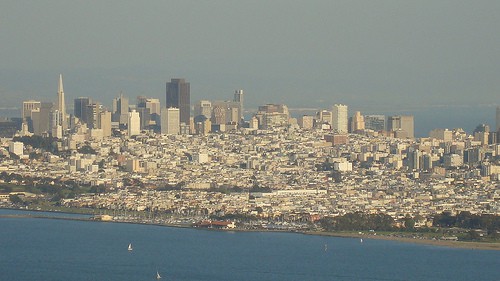
The effects of particle pollution are serious. According to the American Lung Association, the particles are so small they bypass the body’s natural defenses and lodge deep in the lungs. Click here to view a short video clip on particle pollution.
However, the good news is that Spare the Air regulation does work in the Bay Area. According to Jack Broadbent, executive officer for the Bay Area Air Quality Management District:
Fine particles in wood smoke produce the same kinds of health effects as diesel exhaust pollution.
Continue reading “Monitor Air Quality in the Bay Area with iSmog – a free application for iPhone”


